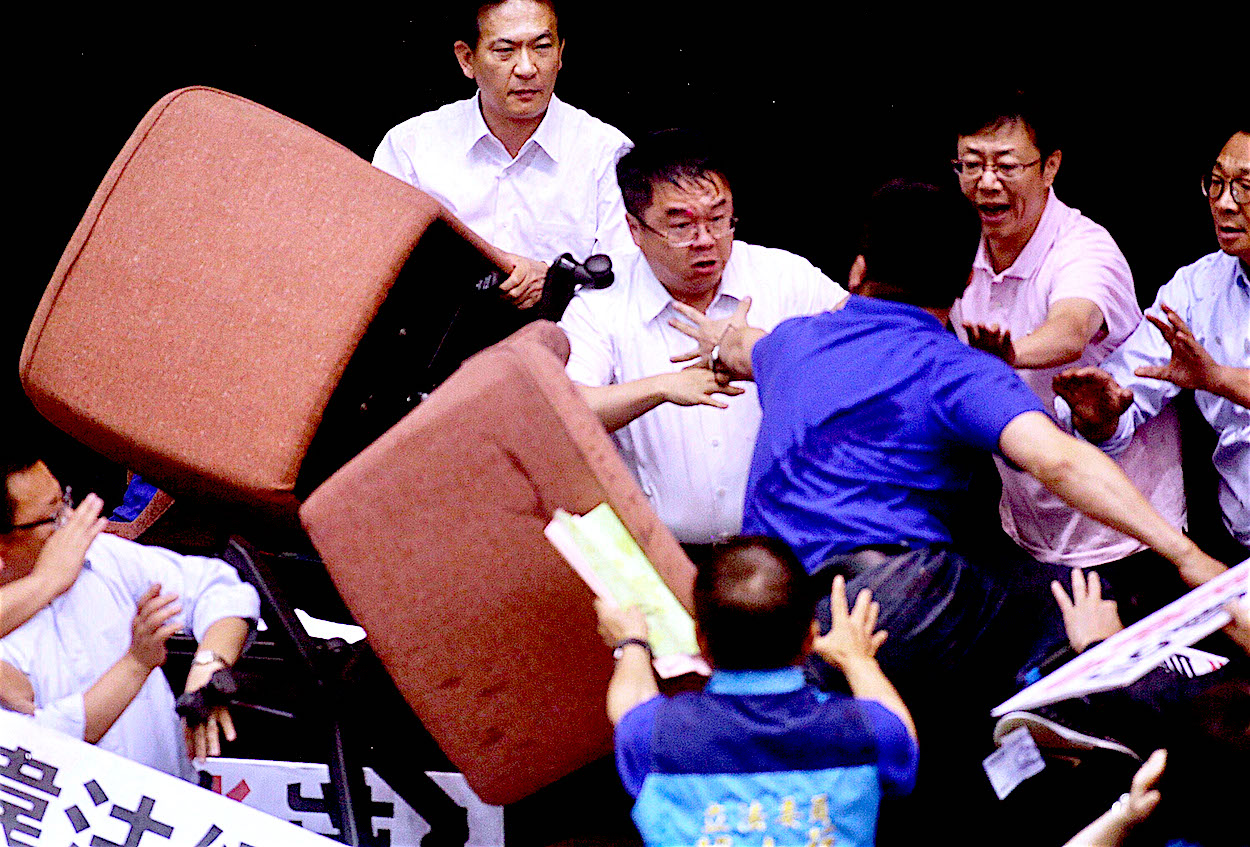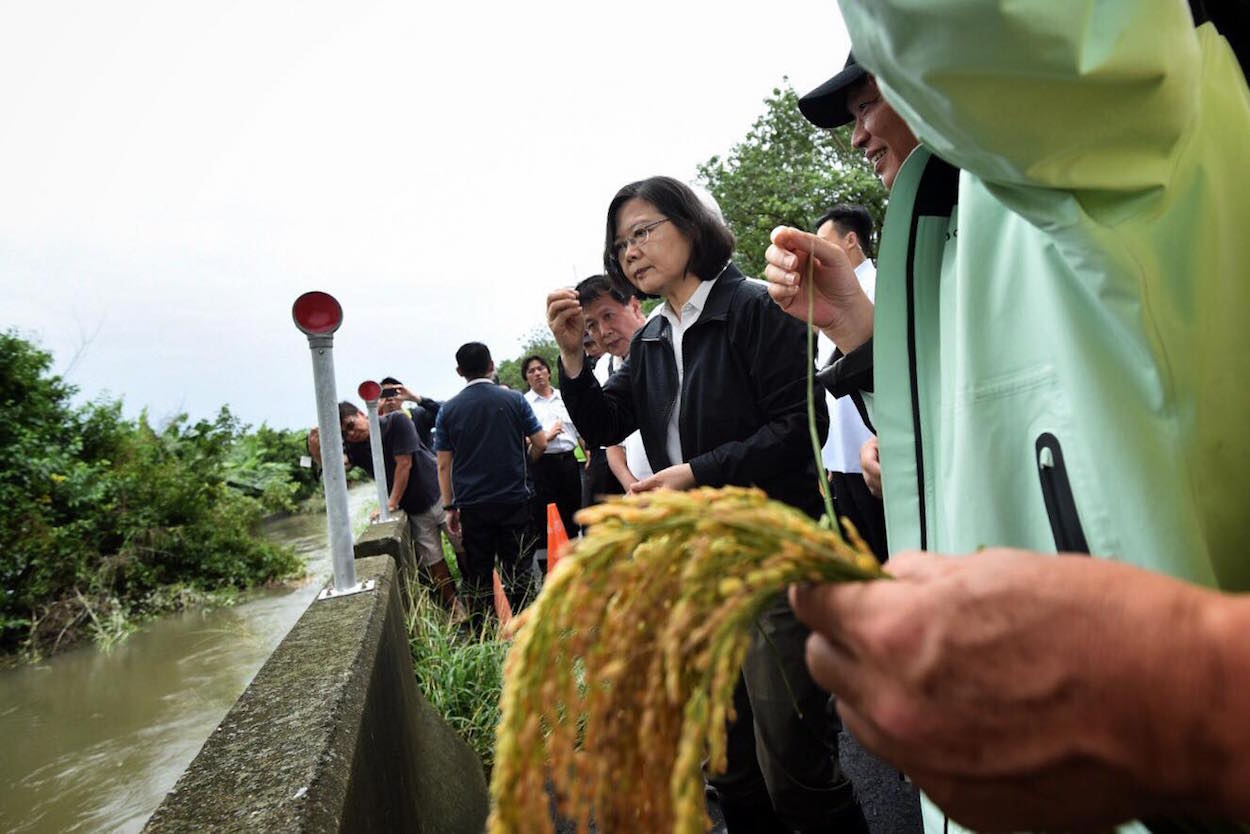by Brian Hioe
語言:
English
Photo Credit: SET
PERHAPS IN international coverage of Taiwan’s democracy, both with regard to its history and its present, some clarification is required about the meaning of Taiwanese democracy instead of simply being happy that the international media is paying attention to otherwise obscure Taiwan.
With recent international coverage about a recent fight within the Legislative Yuan between KMT and DPP legislators regarding the distribution of borough chiefs and the broader history of legislative fighting in Taiwan, many in Taiwan have reflected upon why exactly it is that Taiwan’s legislature so frequently has fights take place within it. Indeed, fights within Taiwan’s Legislative Yuan are fairly common, and international media has a way of occasionally discovering and rediscovering this phenomenon over and over. Nevertheless, the question is worth reflecting on as something which probably has ties to the structural nature of Taiwanese democracy.
Some deem fights within legislature to be an expression of the highly polarized nature of Taiwanese politics, with sharp divisions between the pan-Blue and pan-Green alliances. This has a large degree of truth. The primary political cleavage in Taiwan is not between the political Left and Right, per se, but between unification with China or independence for Taiwan. These are differences in conceptions of Taiwan’s political division which are inherently oppositional, without a lack of substantial capacity for a middle ground position which blends both political poles, as occurs with the Left-Right political spectrum.
 Photo credit: CNA
Photo credit: CNA
This explains in part why pan-Blue and pan-Green political actors would be willing to lob fists at each other altogether too willingly in legislature is because their vision of Taiwan’s future are inherently at odds with each other and each views the other side as an existential threat. Again, issues of unification/independence are obviously not the only issue that pan-Blue and pan-Green legislators fight about, but unification/independence remains the primarily dividing issue between the two main political camps in Taiwan, and other issues arrange themselves around this split. Again, the fundamental split within Taiwanese politics being between unification/independence is a way in which Taiwanese democratic politics fundamentally differs from other two-party democracies, and is an unsettled legacy of Taiwan’s authoritarian period.
Consequently, there is quite simply no way for Taiwanese legislators from both political camps to have a collegial relation, as one might see between members of otherwise rival political parties in other contexts. One observes, for example, that there is very little political discourse in Taiwan which touts the benefits of bipartisan politics as a universal good, although bipartisan does occur within legislature nonetheless.
Yet, likewise, it is because of Taiwan’s only recently post-authoritarian nature which fights break out so often in legislature. As the KMT was the former ruling party during the authoritarian period and the DPP was the political party which formed out of the democracy movement which fought against the KMT, blood was literally split in battle between the two sides for Taiwanese democracy to be established. It is no surprise that antagonisms continue to exist between both sides in addition to that the pan-Blue and pan-Green camp have at heart fundamentally oppositional political visions.
Likewise, seeing as the democracy movement seems to have enshrined the crucial role of the mass movement in Taiwanese politics, the fact that pan-Blue and pan-Green political actors literally fought each other during the period of KMT authoritarianism and the rising democracy, at far greater intensity than occasional fisticuffs in legislature, probably also contributes to why political violence is somewhat normalized in even electoral politics. Taiwanese democracy, after all, was realized in struggle.
Indeed, returning to the fact that discussion upon why the Taiwanese legislature so frequently descends into fights between legislator as prompted by international media, one observes that Taiwanese democracy is usually conceived of as fully finished but that many of the peculiarities of Taiwanese politics frequently reported on by international media stem from the recent and still unsettled nature of Taiwanese democracy. International media often excludes the Taiwanese people from the history of Taiwanese democracy, instead focusing on claims that Chiang Ching-Kuo is somehow the founding father of Taiwanese democracy for his willingness to step back from KMT authoritarianism. With international coverage of the thirtieth anniversary since the lifting of martial law in Taiwan, we may note that this claim is one which occurs frequently enough that Tsai Ing-Wen addressed this in her comments on the anniversary.
 Photo credit: Tsai Ing-Wen/Facebook
Photo credit: Tsai Ing-Wen/Facebook
Much of this probably returns to the fact that alongside claims touting the achievements of Taiwanese democracy, one also usually sees references to the Taiwan Miracle or Taiwan’s economic growth as part of the Four East Asian Tigers, sometimes also crediting Chiang Ching-Kuo and indirectly the KMT developmentalist state for this instead of the Taiwanese people. The successes of Taiwanese democracy are primarily thought of by many members of the international community alongside the successes of the Taiwanese economy. One wonders, in fact, if they would claim about the former if not for the latter.
Such are oftentimes the priorities of the international community. So, to cast doubt on the claim that Taiwan’s best weapon against Chinese claims over Taiwan is its democracy, we also observe that members of the international community sometimes is all too willing to look the other way in terms of democracy and human rights regarding countries with powerful economies they can do business with, as China is a prominent example of today. But, seeing as the world stood by for decades while the KMT ruled over Taiwan with an iron fist, instead allowing Taiwan’s economic successes under KMT rule to mask over its lack of democracy, this is no different.
In this light, international media sensationalism about fights in Taiwanese legislature as of late is broadly part of a longer pattern in which international media has had its priorities wrong in coverage of Taiwan. What should be hoped for, then, perhaps is for further clarification on what Taiwanese democracy means to international media.

